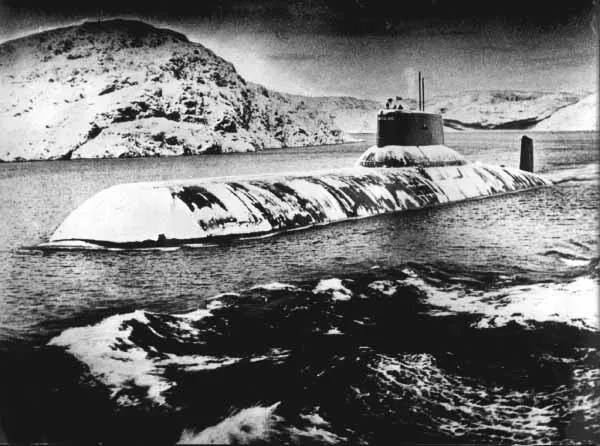Russia is (by land mass), the largest country in the world. At one point in its history, it was home to the largest army in the world, the largest stockpile of nuclear warheads, and… the largest submarines ever built.
Known to the West as the Typhoon class, and to Russians as “Akula” (shark), these black and red beasts were created as a counter to the American Ohio class, carrying dozens of nuclear-tipped ballistic missiles as a deterrent during the Cold War.
At 574 feet long and 75 feet in breadth, these these 25,000 ton monsters were actually larger and wider than the American vessels they were created to compete with.
Essentially tasked with inflicting a nuclear apocalypse upon the West if the Cold War got hot, the Typhoons were given a fairly unique design to keep the boats rugged and survivable — should either an accident or an anti-submarine attack occur — so that they could still carry out their incredibly destructive mission.

Inside the Typhoon’s hulking mass existed a pair of longer pressure hulls from older Delta-class ballistic missile submarines and three more smaller hulls placed around the boat to protect other critical points like engineering spaces and the torpedo rooms. Should a breach occur — whether by collision or attack — the crew inside the other pressure hulls would be safe and the sub would still be operational.
Typhoons carry their missiles in front of their gigantic (and almost comically oversized) sail instead of behind it, as Delta-class and American Ohio-class boats do.
Two nuclear reactors give these warships the power they need to operate, allowing for a maximum speed of around 27 knots underwater (31 mph).
Instead of constantly traversing the world’s oceans, Typhoons were built to sit under the Arctic Circle for months at a time, waiting to punch through the ice in order to launch their deadly payloads of nuclear-tipped missiles.
Because of their designated operating locations, these subs could often escape harassment by American and British hunter/killer submarines constantly prowling around the Atlantic Ocean looking for Soviet warships to mess with.

Because of the length and duration of their missions, Typhoons were designed with crew comfort in mind. In fact, the accommodations aboard a Typhoon were so luxurious that sailors in the Soviet (and later, Russian) navy nicknamed these gargantuan vessels “floating Hiltons.”
Instead of utilitarian steel furniture with minimal padding, a Typhoon’s interior features wooden-paneled walls, comfortable padded chairs, raised ceilings and full-sized doorways, and a fully-stocked gym. Unlike any other submarine ever built, each Typhoon also came with a unique and somewhat enviable feature – a lounge for sailors, including a swimming pool and a sauna.
You didn’t misread that – Typhoons were actually built with small two-foot-deep swimming pools to improve crew morale on long deployments, along with saunas and a lounge area with plush rocking chairs. Televisions (a luxury in the Soviet Navy) were also set up throughout the boat, playing Soviet movies, television shows and propaganda for the crew’s entertainment.
But just as these behemoth war machines entered service with the Soviet Navy, their time rapidly began to wind down. Of the seven planned Typhoons, six were built throughout the 1980s and retired less than 10 years later in the 1990s.
The Russian government simply couldn’t afford to keep fielding the largest missile submarines they (or any other country in the world) had ever built.
In the 1990s, the US and Canadian governments began offering financial incentives to Russia, after the fall of the Soviet Union, to retire a number of their nuclear deterrent warships. Among the many sent to the wreckers were three of the six Typhoons, with the other three staying in service.
Today, only one Typhoon remains active while two others have been placed in reserve. The sole active sub, the Dmitriy Donskoy, serves as a test platform for Russia’s newest submarine-launched cruise missiles, though its days are also numbered with the advent of newer Russian Borei-class ballistic missile subs.
The other two Typhoons currently held in reserve — the Arkhangelsk and the Severstal — will likely be scrapped between 2018 and 2019, with the Donskoy following not too long after, ending the story of the largest nuclear ballistic missile submarines ever built.


